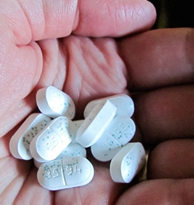Taking antibiotics: briefer and more complicated

For a long time it held true: antibiotics should be taken for a fixed period. But meanwhile doctors understand better and better when a brief intake is sufficient - thus unburdening the patient.
Since the discovery of penicillin in 1928, some of the most common fatal diseases have been curable: wound sepsis, pneumonia, nephritis, heart valve inflammation. Since then it has been said, even with minor infections: take the antibiotic so that it works safely, for at least a week or else the whole package. "We have said goodbye to this dogma," explains Professor Dr. Winfried Kern, head of the Infectiology section of the Medical Center - University of Freiburg. Today, the treatment duration depends much more on the bacterial pathogen, the antibiotic's active ingredient and the condition of the patient. "In some cases, such as an uncomplicated urinary tract infection, one to three days of treatment may be enough. In other cases, especially in chronic inflammation, long-term treatment is still advised", says the infectiologist.
Tips for taking antibiotics
I still have antibiotics at home. May I take them without medical advice?
No. The antibiotic should always be prescribed and attended by the doctor. Because the duration and the type of active ingredient must be exactly matched to the pathogen. Incorrectly used antibiotics can put a heavy strain on the body.
May I exercise during treatment?
Those taking antibiotics should avoid strenuous physical exertion, on account of their insufficiently healed infection. The body needs strength to fight against the pathogens. Otherwise, the infection may spread.
May I consume milk and alcohol during antibiotic treatment?
Alcohol should be strictly avoided during treatment. It weakens the body and prevents some medications from working. The calcium in milk makes some antibiotics ineffective. The doctor will know which medications that applies to.
Are antibiotics and contraceptive pills compatible?
Women who use contraceptive pills should ask their doctor if, in this case, there could be any interaction with the medicine. Some active ingredients may reduce the pill's effect.
Resistances – a serious danger
Unlike was long thought, antibiotic resistance often does not develop in the course of treatment, but already exists beforehand. "An antibiotic dose that continues too long is more likely to promote the spread of resistant bacteria, because non-resistant bacteria are being got rid of," says Kern. In order to teach as many doctors as possible to use antibiotics carefully, in 2010 Kern began the "Antibiotic Stewardship" training initiative with doctors from the Medical Center - University of Freiburg. It is now offered nationwide, taught to hundreds of doctors, and was recognized by the Federal Ministry of Health as a "best practice" in minimizing antibiotic resistance.
Weather map of resistant pathogens
"We know from earlier studies that resistant pathogens first spread primarily within regional care networks, for example, between hospitals and doctors in private practice," says Professor Dr. Hajo Grundmann, head of the Institute for Infection Prevention and Hospital Epidemiology at the Medical Center - University of Freiburg. He is currently coordinating a Europe-wide study in which researchers analyze the genetic material of resistant pathogens. They identify related germs and enter them on a map. "Physicians or public authorities can thus in future recognize how difficult-to-treat pathogens spread across national borders, comparable to a thunderstorm front on a weather map. In the best case, this could then be counteracted in good time", says Grundmann.
Back